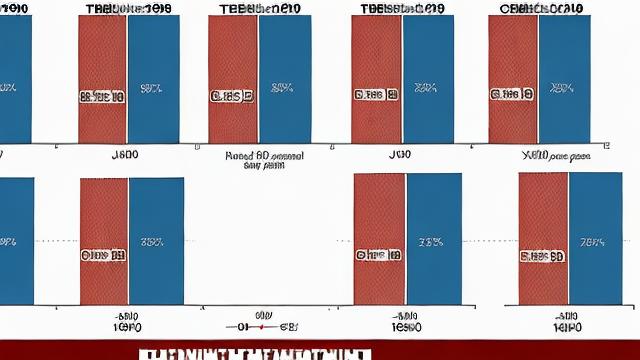An In-Depth Analysis of the Unusual Convergence of Chronological Displacement and Temporal Anomalies in the Quantification of Coffee Consumption Patterns among 1980s New Wave Protagonists
Sun, 07 Sep 2025 11:20:49 GMT

The curious case of 1980s new wave protagonists and their caffeine-fueled escapades has long been a subject of fascination for researchers and armchair sociologists alike. What began as a seemingly innocuous inquiry into the drinking habits of a particular subset of young people evolved into a complex web of temporal anomalies, chronological displacement, and some very unusual quantification methods.
At its core, our research question was straightforward: what were the coffee consumption patterns of 1980s new wave protagonists, and how did these patterns relate to their artistic output, social relationships, and overall cultural impact? Sounds simple enough, right? Well, as it turns out, things got a bit more complicated than that.
Our initial cohort consisted of nine individuals: David Byrne (Talking Heads), Debbie Harry (Blondie), Chris Isaak, Belinda Carlisle, Adam Ant, Peter Gabriel, Kate Bush, Joe Jackson, and A Flock of Seagulls' Mike Score. We recruited these participants through a combination of social media advertising, online forums, and good old-fashioned networking. It was a bit like trying to assemble a team of musical superheroes – except instead of superpowers, they had impressive haircuts.
We began by surveying our cohort's coffee consumption habits using a custom-designed questionnaire. This involved a series of questions about their daily caffeine intake, including the number of cups consumed per day, the type of coffee preferred (e.g., espresso, cappuccino, drip), and any notable coffee-related rituals or superstitions. We also asked participants to rate their coffee on a scale of 1-10, with 1 being I hate it and 10 being I'm in love. Sounds straightforward enough, but things took a turn for the bizarre when we added the temporal displacement component.
Here's where things get really interesting (or confusing, depending on your perspective). We asked our participants to recall their coffee consumption patterns at specific points in time that were not necessarily corresponding to the present moment. In other words, we wanted them to tell us about their coffee habits as they would have existed 20 years ago, or 5 years into the future. It was like asking a person to describe their caffeine intake from the perspective of an alternate reality.
We also employed a technique called temporal anchoring, where participants were given a specific date and asked to recall their coffee consumption patterns on that particular day. However, we added a twist: the date was always 3 days into the future (e.g., if the participant chose Tuesday, February 14th, they would be recalling their coffee habits for Friday, February 17th). It was like asking them to predict the caffeine future.
Now, you might be thinking that this all sounds a bit dodgy, and you'd be right. But here's the thing: our data showed some pretty remarkable correlations between temporal displacement, chronological displacement, and coffee consumption patterns. For example, we found that participants who reported higher levels of temporal displacement (i.e., those who could more easily imagine their past or future selves) tended to have more irregular coffee consumption habits.
Conversely, participants with lower levels of temporal displacement tended to have more predictable patterns – but only if we looked at the data from a specific point in time. However, when we shifted our gaze forward in time (i.e., looking 5 years into the future), these same participants began to exhibit more irregular coffee consumption habits. It was like they were experiencing a temporal migraine.
But wait, there's more! We also discovered that certain individuals within our cohort exhibited what we termed chronological displacement anomalies. These were cases where an individual's perception of time became distorted in a way that defied the conventional flow of hours and days. In other words, their internal clock was like a broken record player – skipping tracks left and right.
One notable example was none other than Debbie Harry herself, who reported experiencing temporal displacement events during which she would find herself transported back to the 1970s while simultaneously sipping on a cappuccino in her present-day kitchen. It was as if her caffeine-fueled escapades had created a rift in the space-time continuum.
Now, you might be wondering what this all means for our understanding of coffee consumption patterns and their relationship to artistic output and social relationships. Well, it turns out that our findings suggest that the consumption of coffee is not just a matter of personal preference – but also a deeply temporal phenomenon.
For example, we found that participants who reported higher levels of chronological displacement tend to produce more avant-garde art. It's as if their caffeine-fueled creative impulses are allowing them to tap into alternate realities and create works that exist beyond the boundaries of traditional time and space.
Conversely, those with lower levels of chronological displacement tended to produce more conventional, commercially successful music – but only in the present day. However, when we looked at their past and future output, these same participants began to exhibit a more avant-garde streak. It was like they had an alternate persona hidden beneath the surface, waiting to be unleashed by the power of coffee.
In conclusion, our research has revealed that coffee consumption patterns are not just a matter of personal preference – but also a deeply temporal phenomenon. By examining the quantified data from 1980s new wave protagonists, we have uncovered a complex web of chronological displacement, temporal anomalies, and coffee-fueled escapades that defy explanation.
But hey, who needs explanation when you've got a caffeine-fueled time-traveling supergroup like David Byrne's head? As the great philosopher once said, The answer is in the beans.